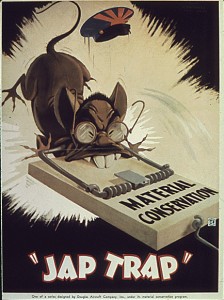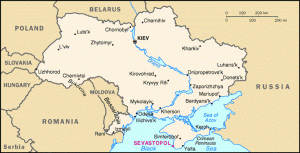Fascism and the Inevitability of War & Stalin’s Master Plan
When representatives from Germany and the USSR established the Nazi-Soviet Non-Aggression Pact, it is difficult to tell whether the Soviets actually believed in the treaty lasting. The fact that the war resulted in a victory for the Allies and the USSR probably allowed the Soviets to see the war differently than the Axis powers, certainly with a different bias. In Joseph Stalin’s 1946 speech, he seemed to think that because the Germans were fascist with the Nazi Party at the helm, war was inevitable. He pinpointed this circumstance on an ideological belief inherent in fascist politics – the need to acquire more foreign territory and attain world domination. He cited that the only reason the Soviets were willing to work alongside capitalist powers like the U.S. and Britain was via a common enemy, the fascists. All three of those parties disliked that the fascists eliminated the sovereignty of small, developing nations; it was likely for different reasons though. The U.S. and Britain likely wanted to see the small nation develop into a trading partner, or at least a suitable ally or buffer country, while the Soviets likely hope to establish a Communist movement there. In short, all three parties understood the fascists to be a threat to the freedom of lots of peoples and, for Stalin and the Soviets, an inevitable source of conflict.
If Stalin believes that the fascists would inevitably create conflict, then why would he sign a treaty with Nazi Germany? In short, there are a few potential answers to this question. Firstly, Stalin could be lying through his teeth and merely just trying to cover himself in this speech; it is, after all, an “election.” Maybe Stalin honestly thought the Germans would honor their agreement. There is also the possibility that Stalin merely wished to delay the inevitable, giving him more time to prepare for a Soviet attack. Without this agreement, Hitler may have jumped straight from Poland and Austria, to the USSR. Stalin also must have known that Hitler’s hatred of Marxists and Communists would have to ground itself somehow.
However, the last possibility is perhaps the most striking, and the boldest out of the three ideas presented here. (In short, bear with me on this one.) Stalin may have known that Hitler would try to stab him in the back and break an agreement; he has had to deal with lots of political enemies himself. Therefore, perhaps Stalin wanted the pact signed, almost as if to goad in or tempt the Nazis, to convince them that the Soviets were in a false sense of security. If a nation, like the USSR, can anticipate and prepare ahead of time for a backstabbing, then it can catch its opponent off guard immensely. Since a backstabbing relies heavily on the element of surprise, if one were to reverse that element, the backstabber would be caught in a near impossible situation. When the Nazis do finally attack the USSR in one of the largest military offenses in history, it initially resulted in heavy losses for the Soviets.[1] However, they were able to absorb the damage, get back on their feet pretty quickly, and retaliate with great strength, as Stalin described in his speech. The Soviets from that point onward made the offensive a war of attrition, using their home territory to their advantage. In short, they took out the German army quite skillfully. Lastly, Stalin continuously mentioned during his speech what a victory it was not just for the USSR as a whole, but for the Soviet social system, the Soviet state system, and for the Red Army. Stalin wanted to prove critics wrong, and Nazi Germany during WWII provided the perfect venue to demonstrate the USSR’s advancements. The U.S. did it during the Spanish-American War, and von Bismarck was well known for starting wars to help get Germany going; is it not unlikely that Stalin wanted WWII to happen and that he wanted Nazi Germany to invade?
[1] “Operation Barbarossa.” Wikipedia. Accessed April 8, 2015. http://en.wikipedia.org/wiki/Operation_Barbarossa.



